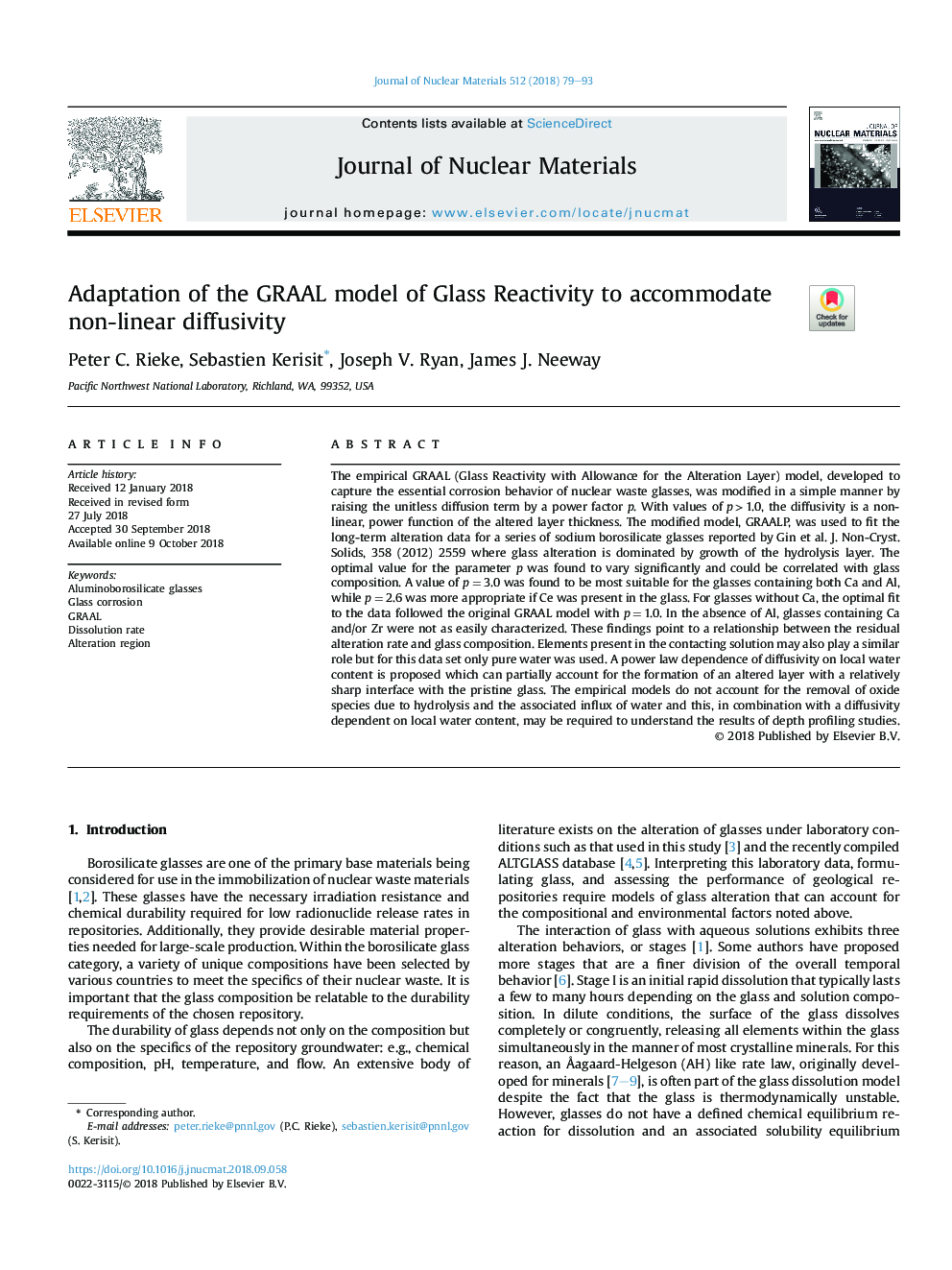| Article ID | Journal | Published Year | Pages | File Type |
|---|---|---|---|---|
| 11011335 | Journal of Nuclear Materials | 2018 | 15 Pages |
Abstract
The empirical GRAAL (Glass Reactivity with Allowance for the Alteration Layer) model, developed to capture the essential corrosion behavior of nuclear waste glasses, was modified in a simple manner by raising the unitless diffusion term by a power factor p. With values of pâ¯>â¯1.0, the diffusivity is a non-linear, power function of the altered layer thickness. The modified model, GRAALP, was used to fit the long-term alteration data for a series of sodium borosilicate glasses reported by Gin et al. J. Non-Cryst. Solids, 358 (2012) 2559 where glass alteration is dominated by growth of the hydrolysis layer. The optimal value for the parameter p was found to vary significantly and could be correlated with glass composition. A value of pâ¯=â¯3.0 was found to be most suitable for the glasses containing both Ca and Al, while pâ¯=â¯2.6 was more appropriate if Ce was present in the glass. For glasses without Ca, the optimal fit to the data followed the original GRAAL model with pâ¯=â¯1.0. In the absence of Al, glasses containing Ca and/or Zr were not as easily characterized. These findings point to a relationship between the residual alteration rate and glass composition. Elements present in the contacting solution may also play a similar role but for this data set only pure water was used. A power law dependence of diffusivity on local water content is proposed which can partially account for the formation of an altered layer with a relatively sharp interface with the pristine glass. The empirical models do not account for the removal of oxide species due to hydrolysis and the associated influx of water and this, in combination with a diffusivity dependent on local water content, may be required to understand the results of depth profiling studies.
Related Topics
Physical Sciences and Engineering
Energy
Nuclear Energy and Engineering
Authors
Peter C. Rieke, Sebastien Kerisit, Joseph V. Ryan, James J. Neeway,
